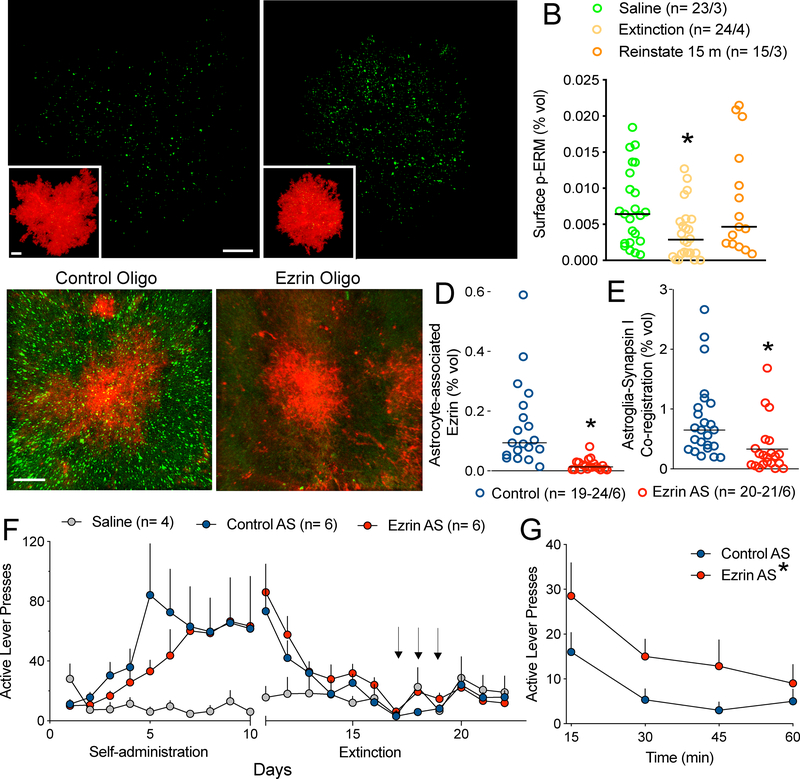Figure 3.
Ezrin knockdown prevents transient astroglial plasticity and promotes cue-induced heroin seeking. (A-B) p-ERM immunoreactivity was examined in tissue extracted from animals following extinction or after 15-min of reinstatement with heroin cues (see Supplemental Figure S6 for inset magnification). (B) Heroin cues elicited a significant elevation in p-ERM levels compared to those observed in extinguished animals (Kruskal-Wallis= 7.483 p= 0.0237) and an ezrin-targeted antisense oligo was developed to knock down ezrin expression (C-D). Relative to a control oligo (C), the ezrin-targeted morpholino oligo produced 86% ezrin knockdown (reduction in green fluorescence) near the injection tract (D; Mann-Whitney t-test, p= 0.0007). The ezrin-targeted oligo produced a profound reduction in synaptic association of astroglial membrane (E, Mann-Whitney t-test, p= 0.0003). (F) Next, rats were trained to self-administer heroin for 10d before undergoing extinction training. On d7 of extinction, rats received bilateral infusions of the ezrin-targeted antisense oligomer or a control oligo for three consecutive days in the NAcore (arrows). Animals from both groups were reinstated using cues and animals that underwent ezrin knockdown exhibited enhanced and prolonged reinstatement behavior compared to controls (G, 2-way ANOVA, F(1, 40)= 8.193, p= 0.0067, effect of treatment). In (B, D-E), n is shown in legends as cells/animals. (G) 1-way ANOVA, F(2,13)= 0.84, p= 0.455. In (E, J), data shown as mean±sem; in (D, H, I) data shown as median. Bar= 10 μm (A), 10 μm (inset), 20 μm (C).

